hankyoreh
Links to other country sites 다른 나라 사이트 링크
[Reportage] Daily life of Pyongyang residents as of May 2019
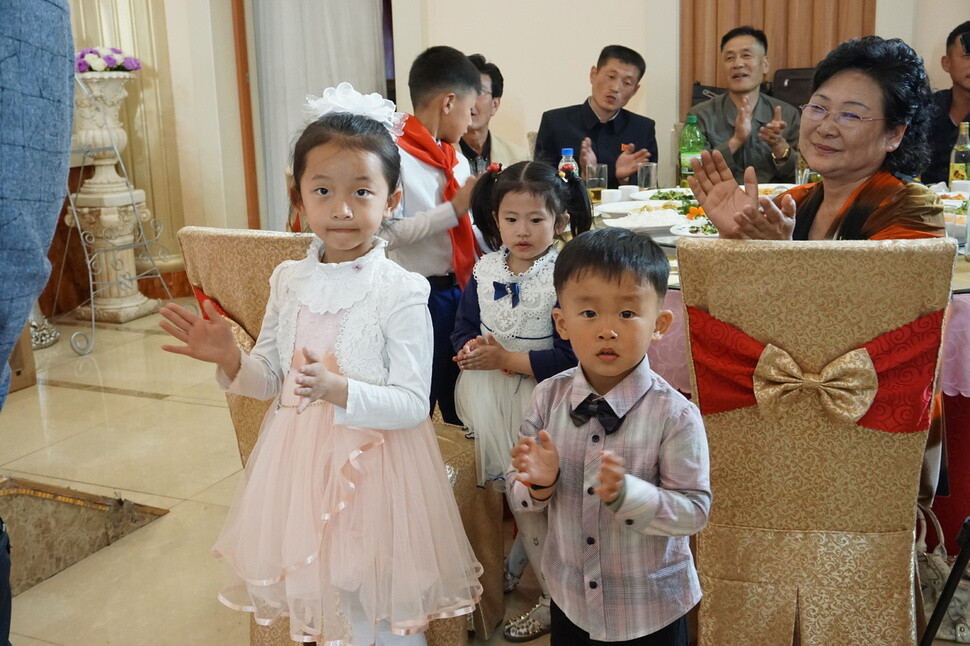
Jin Cheon-gyu, CEO of Unification TV, has depicted the present day in Pyongyang through writings and photographs while covering the city on the ground in North Korea since early this year. The shadow of tensions may have begun to loom over the Korean Peninsula, but that only raises the need to understand the perspective and daily lives of Pyongyang residents. The very fact that Jin has been able to send his writings and photographs directly to Seoul from Pyongyang via email gives a sense of the changes under way in North Korea.
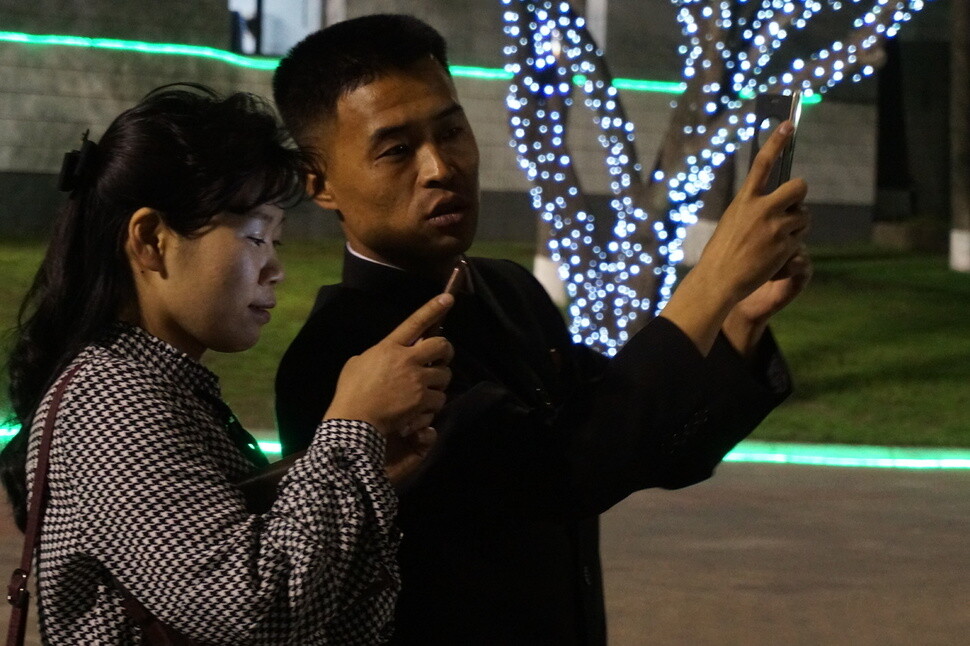
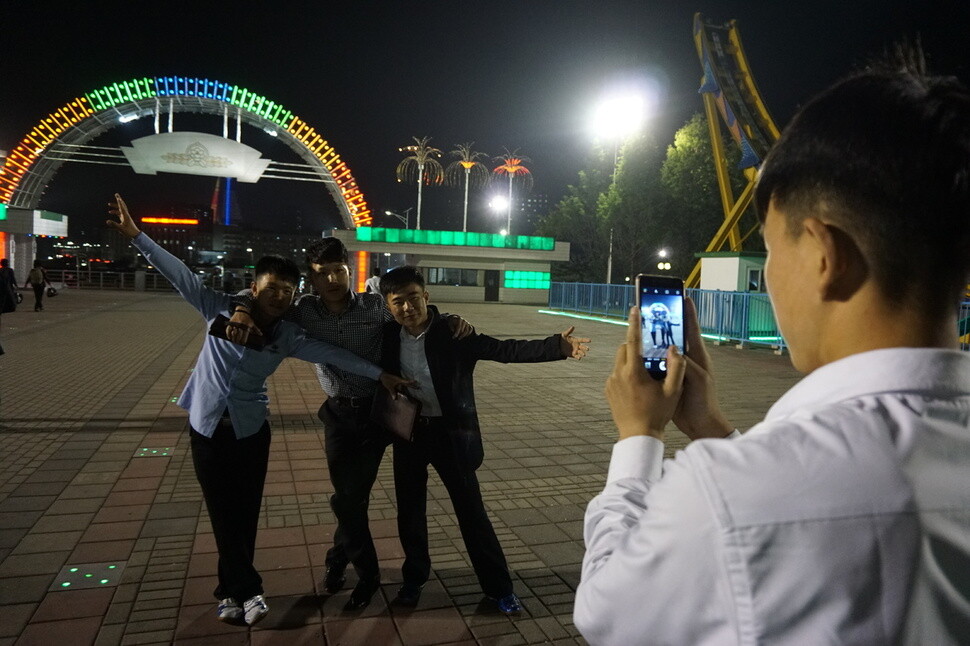
It was another evening when I was heading out for dinner after a brief rest at the hotel from my coverage in downtown Pyongyang. I found my attention drawn to the flashing lights, something I had usually passed by without notice. These days, the nights in Pyongyang seem brighter even to me, someone who has been covering the North on an average of once every month or two since the fall of 2017. It’s an unanswerable question.
Even amid what residents here described as “airtight global sanctions, the likes of which have never before been seen in the world,” as of May 2019, the number of vehicles in downtown Pyongyang has not diminished. If anything, there appear to be more of them, while stores abound with what the locals call “Choson products”; blackouts happen rarely if ever. Astonished, I put the question to the people I met. Chong Ki-pung, a 63-year-old professor of political and social science at Kim Chol-ju University of Education, said, “Recently, there hasn’t been a day where we haven’t faced sanctions from the US. Since long ago, we’ve been steadily preparing to live by our own devices.”
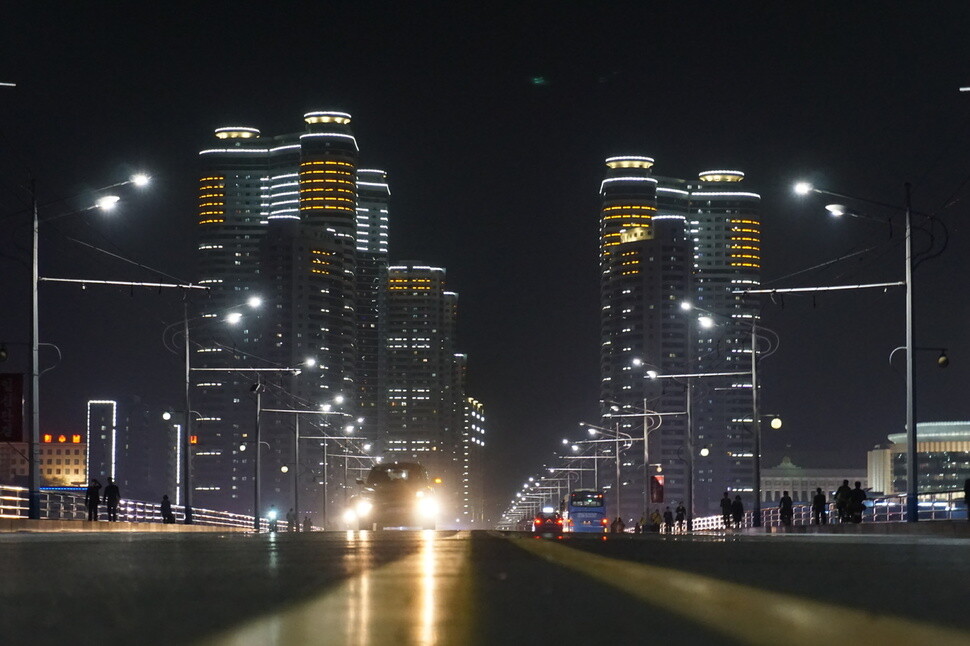
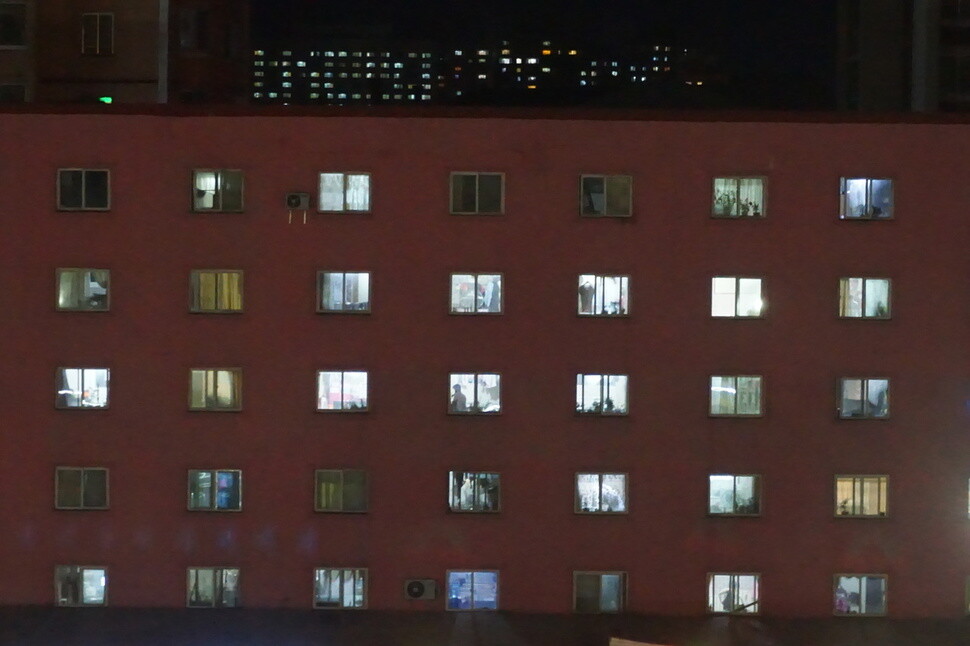
While visiting Singapore in June 2018 for a North Korea-US summit, leader Kim Jong-un said the Pyongyang nightscape “must be made rapturous and extraordinary, like the capital city of a powerful state.” His remarks seemed to allude to the way that a city’s night landscape instills a sense of pride in residents, while showing the rest of the world the economic achievements realized in the face of all the different sanctions. Since Kim came to power, North Korea has reportedly been channeling great efforts into improving power supplies: finishing construction on the Huichon, Paekdusan Youth Hero, and Chongchon River hydroelectric power stations; making large-scale renovations to existing power generation infrastructure to allow the use of coal instead of heavy oil, which has been in acute shortage due to the international sanctions; and encouraging the use of solar power. Viewed from a distance at night, the lights of the high-rise buildings that line Changjon Street, Future Scientists Street, and Yomyong Street in downtown Pyongyang – all built since 2012 – resemble stars fallen to earth.
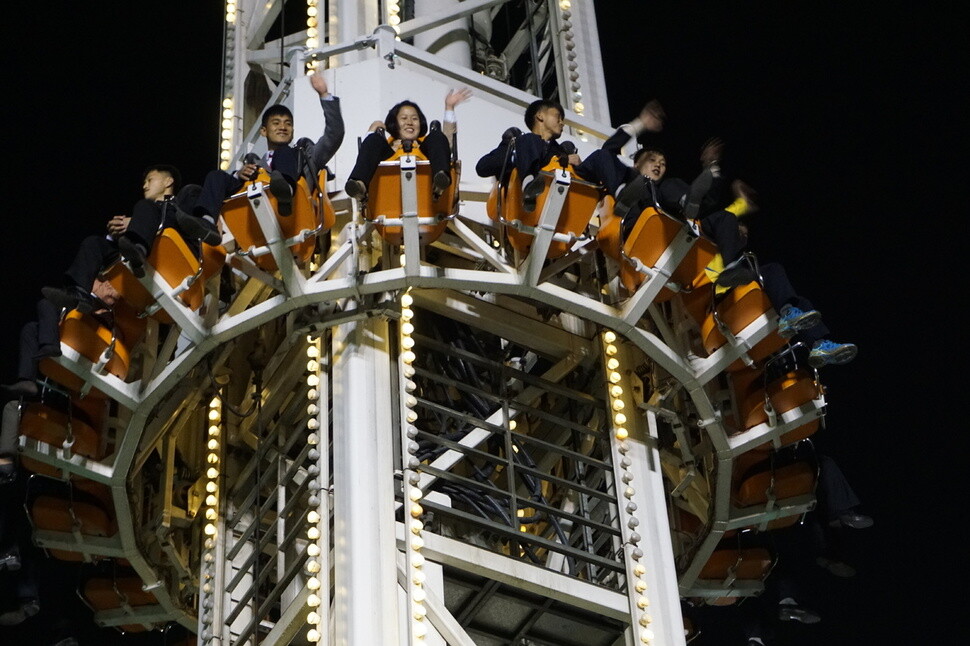
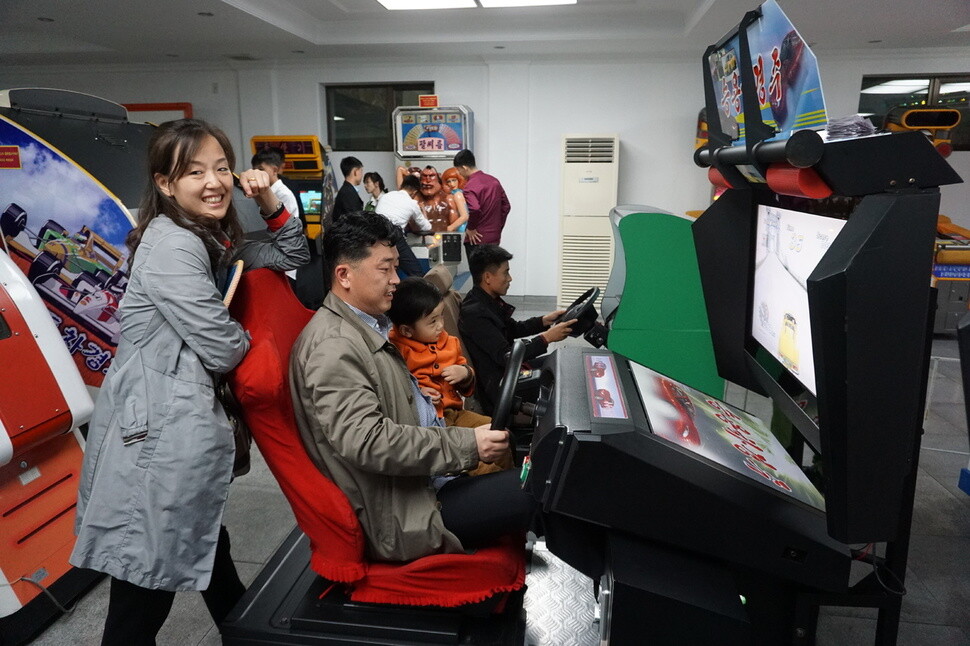
From Moran Peak, I look upon the downtown Pyongyang nightscape. The dazzling image includes the bridges of Okryu and Chongryu over the Taedong River; the Mujigae (Rainbow) cruise ship, which sparkles as it passes in front of Juche Tower; Kim Il-sung Square in front of the Grand People’s Study House; the Ryugyong Hotel, with its LED show; and the streetlights along the Taedong.
Kaeson Youth Park, located near the Triumphal Arch, has become a center of night culture in Pyongyang – an area that takes on even more vitality in the evenings. It is filled with rides that light up in different colors, illuminated foundations, rocks and trees decorated in primary colors, pavilions, and shops; the sounds of people shouting and laughing echo into the distance. Kim Song-gwang, a 22-year-old resident of Pyongyang’s Sosong district who was visiting the amusement park with friends, busily snapped photographs with his smartphone as they cried out while plunging from the park’s drop tower.
“I’m not worried about sanctions,” he said. “I have heard that we have finished building a self-sufficient economy that can hold out for decades longer as long as we have water and air.”

The Ryugyong Hotel has been the recent tourist destination par excellence for the downtown Pyongyang nightscape. Measuring 330m in height with 105 stories, it has yet to open for business, but the building’s outer structure provides a screen that lights up with over 100,000 LED bulbs every night. The first light shows were staged in April 2018 to celebrate the Day of the Sun, the anniversary of Kim Il-sung’s birth; the North Korean flag lit up at the top of the building’s pyramid shape can be seen from anywhere in central Pyongyang. The show presents scenes from North Korea’s history in different animated forms, while phrases such as “Juche thought,” “three great revolutions,” “technology revolution,” “unity,” “self-reliance,” and “ultimate victory” flash against solid-color backdrops. The spectacle also seems to communicate a strong commitment to channeling all energies into economic development now that the completion of the North’s nuclear armament has been declared.
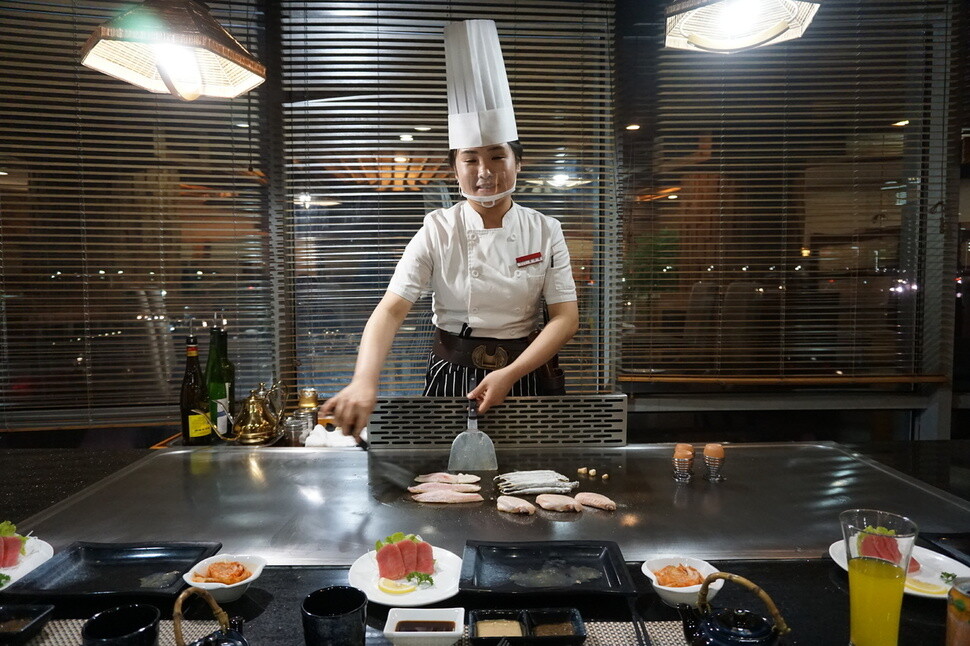
Pyongyang’s stand against US pressure
Seemingly on the path to reconciliation before, North Korea-US relations now appear to be turning into a blinking contest once again. Pyongyang is sending the message at home and abroad that its peace and security are guaranteed by great physical strength. The US, while not as antagonistic as it has been in the past, has spearheaded global sanctions against the North while demanding that Pyongyang accept US-style denuclearization. The increasingly complicated and difficult path toward peace on the Korean Peninsula may explain while the night streets I am walking in Pyongyang this evening seem charged with meaning.
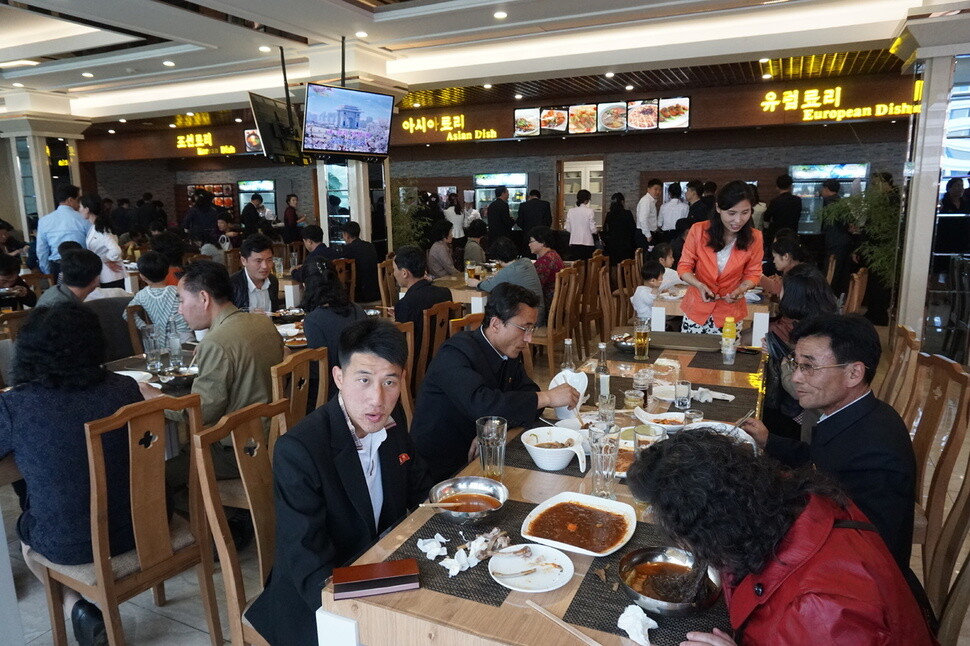
By Jin Cheon-gyu, CEO of Unification TV
Please direct comments or questions to [english@hani.co.kr]

Editorial・opinion
![[Guest essay] The real reason Korea’s new right wants to dub Rhee a founding father [Guest essay] The real reason Korea’s new right wants to dub Rhee a founding father](https://flexible.img.hani.co.kr/flexible/normal/500/300/imgdb/original/2024/0423/8317138574257878.jpg) [Guest essay] The real reason Korea’s new right wants to dub Rhee a founding father
[Guest essay] The real reason Korea’s new right wants to dub Rhee a founding father![[Column] ‘Choson’: Is it time we start referring to N. Korea in its own terms? [Column] ‘Choson’: Is it time we start referring to N. Korea in its own terms?](https://flexible.img.hani.co.kr/flexible/normal/500/300/imgdb/original/2024/0423/3617138579390322.jpg) [Column] ‘Choson’: Is it time we start referring to N. Korea in its own terms?
[Column] ‘Choson’: Is it time we start referring to N. Korea in its own terms?- [Editorial] Japan’s rewriting of history with Korea has gone too far
- [Column] The president’s questionable capacity for dialogue
- [Column] Are chaebol firms just pizza pies for families to divvy up as they please?
- [Column] Has Korea, too, crossed the Rubicon on China?
- [Correspondent’s column] In Japan’s alliance with US, echoes of its past alliances with UK
- [Editorial] Does Yoon think the Korean public is wrong?
- [Editorial] As it bolsters its alliance with US, Japan must be accountable for past
- [Guest essay] Amending the Constitution is Yoon’s key to leaving office in public’s good graces
Most viewed articles
- 1[Column] ‘Choson’: Is it time we start referring to N. Korea in its own terms?
- 2Why Korea shouldn’t welcome Japan’s newly beefed up defense cooperation with US
- 3[Guest essay] The real reason Korea’s new right wants to dub Rhee a founding father
- 4Samsung barricades office as unionized workers strike for better conditions
- 5Senior doctors cut hours, prepare to resign as government refuses to scrap medical reform plan
- 6[Editorial] Japan’s rewriting of history with Korea has gone too far
- 7[Column] The clock is ticking for Korea’s first lady
- 8Opposition calls Yoon’s chief of staff appointment a ‘slap in the face’
- 9New AI-based translation tools make their way into everyday life in Korea
- 10Korean government’s compromise plan for medical reform swiftly rejected by doctors